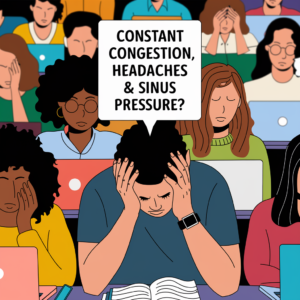Embarking on a journey of physical therapy, especially after years of enduring chronic pain, can be both a hopeful and challenging experience. In this blog, we’ll explore how physical therapy might help alleviate neck and shoulder pain, often stemming from pinched nerves, and discuss strategies to manage symptoms like dizziness, headaches, and nausea during exercises.

Understanding the Role of Physical Therapy
A Potential Path to Relief: Physical therapy is often recommended for chronic pain because it addresses the underlying causes of pain, such as muscle weakness, stiffness, or imbalances. For conditions like pinched nerves, targeted exercises can help relieve pressure on the nerves by strengthening and stretching the surrounding muscles.
How Physical Therapy Can Help
- Improving Mobility: Gentle stretching and strengthening exercises can increase flexibility and range of motion, reducing stiffness and pain.
- Strengthening Muscles: Building strength in the neck and shoulder muscles can provide better support to the spine, alleviating pressure on the nerves.
- Posture Correction: Physical therapists often work on correcting posture, which can be a significant factor in neck and shoulder pain.
Overcoming Challenges in Physical Therapy
Addressing Dizziness and Nausea: It’s not uncommon for neck movements to cause dizziness or nausea, especially in conditions involving pinched nerves. Here are some strategies to cope:
- Communicate with Your Therapist: Be open with your physical therapist about your symptoms. They can tailor exercises to minimize discomfort and gradually build your tolerance.
- Pace Yourself: Start with low-intensity exercises and slowly increase the intensity as your body adjusts.
- Focus on Breathing: Proper breathing techniques can help manage dizziness and nausea during exercises.
- Stay Hydrated: Drinking enough water before and after therapy sessions can help reduce nausea.
Managing Pain and Discomfort
Balancing Exercise and Pain Relief: While physical therapy aims to alleviate pain in the long term, it’s normal to experience some discomfort during the process.
- Use Pain Management Techniques: Apply heat or cold packs, or use over-the-counter pain relief as recommended by your healthcare provider.
- Rest and Recovery: Ensure you get adequate rest between therapy sessions to allow your body to recover.

Looking Ahead: The Journey of Healing
Commitment to Progress: It’s important to approach physical therapy with patience and a commitment to gradual progress. While immediate relief might not be possible, consistent effort can lead to significant improvements over time.
Staying Positive and Informed
Updates and Insights: As you start your physical therapy, keep track of your progress and any changes in your symptoms. Sharing updates on this blog can not only help you reflect on your journey but also provide insights and encouragement to others facing similar challenges.
Physical therapy offers a hopeful path for those suffering from chronic neck and shoulder pain. While challenges like dizziness, headaches, and nausea can make the process difficult, working closely with your therapist and employing coping strategies can help you navigate these hurdles. Stay tuned for more updates on this blog as we follow this journey towards pain relief and improved quality of life.
As I embark on this new chapter of physical therapy, I’m filled with a mix of hope and apprehension. After five years of enduring constant neck and shoulder pain, possibly due to pinched nerves, the suggestion of physical therapy feels like a ray of light, albeit one that I approach with caution. I’ve always been hesitant about physical therapy, fearing that the exercises might exacerbate my pain, dizziness, and other symptoms. But now, I’m ready to give it a try, especially since my neurosurgeon’s team believes it could be beneficial.
Facing the Challenges Head-On
Dealing with Dizziness and Nausea: One of my biggest concerns is how I’ll manage the dizziness and nausea that often accompany neck movements. I’m worried about how these symptoms will play out during my therapy sessions. However, I plan to communicate openly with my therapist about these issues, hoping they can adjust the exercises accordingly.
Pain Management: I’m also bracing myself for the possibility of increased pain, especially in the initial stages of therapy. I’ve stocked up on heat packs and have my pain relief medication at the ready, as advised by my healthcare provider. I know the importance of balancing exercise with adequate rest and recovery.
Staying Positive and Committed
A Gradual Process: I understand that physical therapy is a gradual process and that immediate relief might not be realistic. But I’m committed to sticking with it, hoping that consistent effort will lead to improvement over time.
Documenting My Journey: I plan to document my experiences and progress through this blog. Not only will this help me keep track of my journey, but I also hope it might provide some insight and support to others who are dealing with similar challenges.
As an Amazon Associate we earn from qualifying purchases through some links in our articles.




